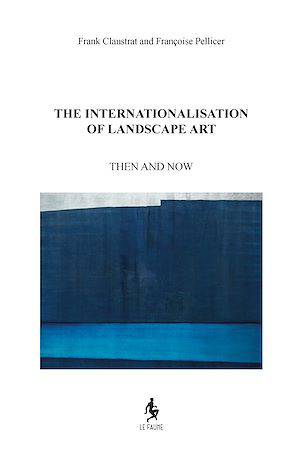
- Afhalen na 1 uur in een winkel met voorraad
- Gratis thuislevering in België vanaf € 30
- Ruim aanbod met 7 miljoen producten
- Afhalen na 1 uur in een winkel met voorraad
- Gratis thuislevering in België vanaf € 30
- Ruim aanbod met 7 miljoen producten
Zoeken
The Internationalisation of Landscape Art E-BOOK
Then and now
Frank Claustrat, Françoise Pellicer
E-book | Engels
€ 17,99
+ 17 punten
Omschrijving
This collective interdisciplinary work on the landscape art from prehistory to the present day is made up of fourteen essays presented in three thematic sections (« The Human Being and his Environment », « The Experience of the Imaginary », « Spaces and Artistic Confrontations »). It brings together contributions from thirteen international researchers and specialists, to decipher what was at stake in debates old and new, and analysing the mass of information available today regarding the polymorphic idea of the landscape. It aims to discern the approaches and the works, the concepts and the periods, the disciplines and the countries, the subjects and the designs, with the goal of presenting new insights. The chronological approach on which this is based hopefully brings an understanding of the extent of successive changes that, before and after Christianisation, affected the perception, the appropriation, the experience of the everyday and the representation of the landscape. The fourteen essays are organised by subject and by hierarchy allowing an understanding of their relationships to each other and to an enduring continuity. Each of them presents a study based on a specific case, chosen for its particular significance, and is completed with bibliographical notes to enhance the reader’s understanding.
Under the direction of Frank Claustrat (Associate Professor in Contemporary Art History, Paul-Valéry Montpellier III University) and Françoise Pellicer (Associate Professor in Modern Art History, Paul-Valéry Montpellier III University), members of the research unit CRISES (Montpellier, France).
Book published with the support of the Paul-Valéry Montpellier III University, the research unit CRISES, and the Hartung-Bergman Foundation, Antibes (France).
Under the direction of Frank Claustrat (Associate Professor in Contemporary Art History, Paul-Valéry Montpellier III University) and Françoise Pellicer (Associate Professor in Modern Art History, Paul-Valéry Montpellier III University), members of the research unit CRISES (Montpellier, France).
Book published with the support of the Paul-Valéry Montpellier III University, the research unit CRISES, and the Hartung-Bergman Foundation, Antibes (France).
Specificaties
Betrokkenen
- Auteur(s):
- Uitgeverij:
Inhoud
- Aantal bladzijden:
- 258
- Taal:
- Engels
Eigenschappen
- Productcode (EAN):
- 9782492366024
- Verschijningsdatum:
- 29/12/2020
- Uitvoering:
- E-book
- Beveiligd met:
- Adobe DRM
- Formaat:
- ePub

Alleen bij Standaard Boekhandel
+ 17 punten op je klantenkaart van Standaard Boekhandel
Beoordelingen
We publiceren alleen reviews die voldoen aan de voorwaarden voor reviews. Bekijk onze voorwaarden voor reviews.








